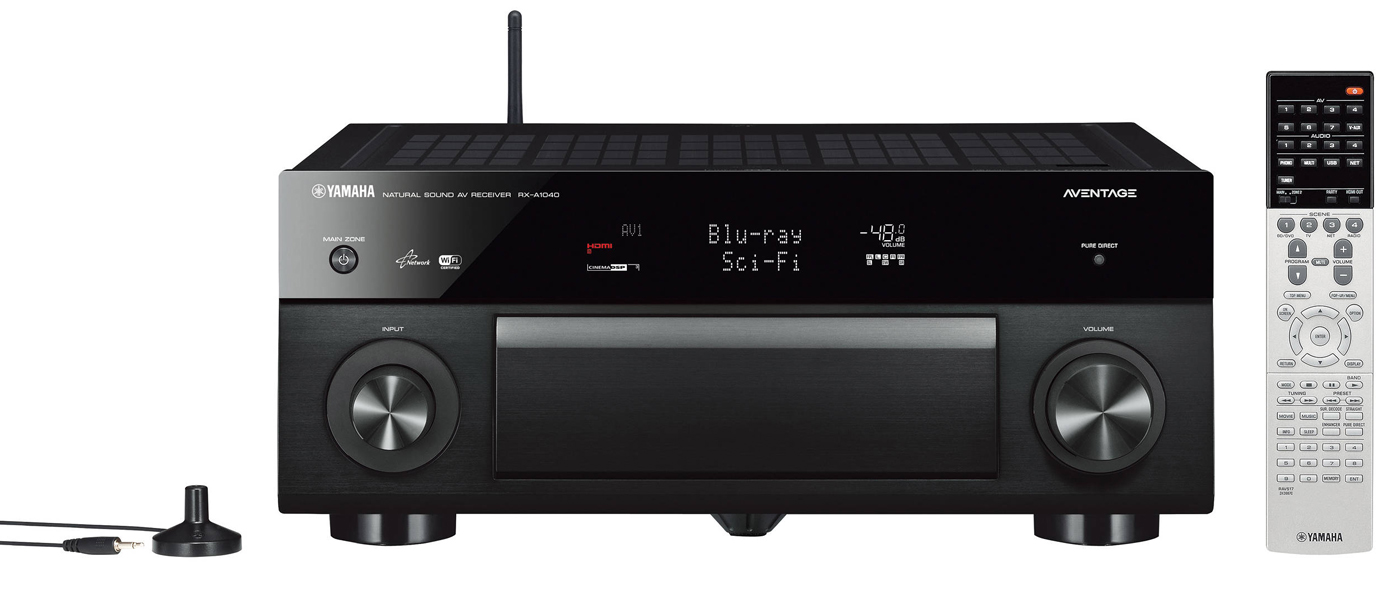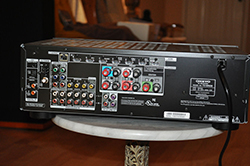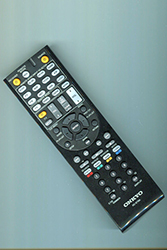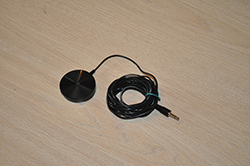Onkyo TX-NR535 A/V Receiver Review Highlights
Secrets of Home Theater and High Fidelity has long been a leader in reviews of a wide range of home theater and audio gear. This review covers the brand new entry level AV receiver from Onkyo, a company well-known for its receivers and other audio gear. The TX-NR535 receiver features the ability to pass through 4K/60 Hz video as well as the more common 1080p via the new HDMI 2.0 standard to ensure compatibility down the road. It also offers a wide range of streaming services as well as built-in Wi-Fi and Bluetooth, allowing it to stream music from your smart phone, tablet or NAS (network attached storage). Further it includes Onkyo’s new proprietary AccuEQ Room Calibration system to allow quick optimization of settings for speaker size, distance and variations in frequency response due to room effects.
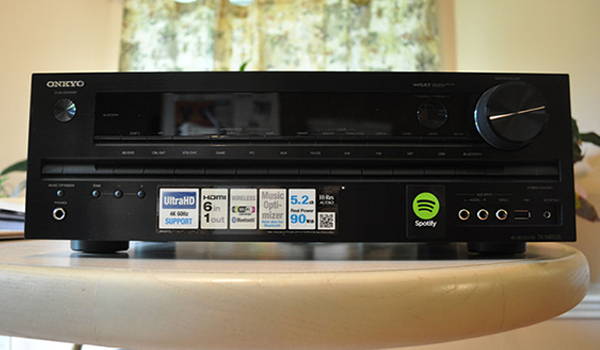
Onkyo TX-NR535 A/V Receiver Highlights Summary
- HDMI 2.0 and 4K/60 Hz pass-through
- Built-in Bluetooth and Wi-Fi
- Can stream Pandora, Spotify, Sirius XM, Slacker, Aupeo!, TuneIn Internet Radio
- Built-in Bluetooth and Wi-Fi
- Supports hi-rez audio up to 24/192 in FLAC, LPCM, Apple Lossless and WMA Lossless, , DSD and Double DSD, but not AIFF
- Powerful W.R.A.T. amplifiers perform better than power ratings lead one to expect
- Basic Owner’s Manual; Advanced Manual (online) doesn’t add much useful information
- SACD input via HDMI is down sampled to 44.1/16 before processing
Introduction to the Onkyo TX-NR535 A/V Receiver Review
When I was offered the opportunity to review Onkyo’s newest entry level A/V receiver by our editor, I was immediately interested since I had purchased its predecessor a few years ago for a bedroom AV system. I needed the ability to stream music from my Synology and Western Digital network attached storage and the Onkyo was one of the few receivers available at that time with an inexpensive add-on Wi-Fi dongle permitting streaming of FLAC files of up to 24/96 kbps resolution.
Since I enjoyed the features and sound of the earlier unit, I was very interested to see what features and abilities the new receiver offered. However, for the purposes of this review, I replaced my main AV receiver/multi-channel amp combo to see just how good the new kid on the block could sound in place of over $3,000 worth of electronics and pushing four large tower speakers and a large center channel speaker.
To be honest, I really didn’t expect the entry level Onkyo to deliver a fully satisfying home theater experience at only 65 wpc compared to over 200 wpc with my own system. Since I play even more music on my main system than video, I intended to run it through the gamut of audio formats such as SACD, DVD-A, and streaming hi-rez downloads in FLAC and DSD file types and even a bit of vinyl playback (using an outboard phono stage). This is a lot to ask of an entry level receiver with a list price of only $499, so I was not sure what to expect! As we shall shortly find out, the Onkyo is the little engine (receiver) that COULD!
ONKYO TX-NR535 A/V RECEIVER REVIEW SPECIFICATIONS
- Design: 5.2 Channel A/V Receiver
- Power Output: 65 W (8 Ohms, 20 Hz-20 kHz, 0.7%, 2 channels driven, FTC)
- DACs: 24 bit/192 kHz
- 2 Zone Operation
- AM/FM Radio Tuner
- Onkyo AccuEQ Room Calibration
- Codecs: Dolby – True HD, DD Plus; DTS – DTS HD
- Dimensions: 5.9″ H x 17.1″ W x 12.9″ D
- Weight: 16.8 Pounds
- Price: $499 USD
- Onkyo
- SECRETS Tags: Onkyo, Onkyo TX-NR535 AV Receiver, Receiver Reviews 2014, HDMI 2.0, WiFi, Bluetooth
Design and Setup of the Onkyo TX-NR535 A/V Receiver
On first glance, the new Onkyo looked exactly the same on the front panel as my older Onkyo TX-NR509 receiver, but then on closer examination I noticed that the new 535 was about ¾” less tall than the older model. This reduction in height gives it a sleeker appearance and also will allow it to fit more comfortably in some AV racks/cabinets. I experienced this problem with the older receiver in my bedroom AV rack as it just barely fit and allowed very little room at the top for ventilation, so the change is for the better in several ways.
The front of the Onkyo is pretty straight-forward with large volume and power buttons and individual input selector buttons along the upper edge. The lower section of the front includes a ¼” headphone jack and a Music Optimizer button (more about that later) and three small buttons for Bass and Treble boost/cut. The right lower section features three RCA inputs for stereo analog and composite video as well as a USB type A input for a flash drive or portable HDD containing music files. Finally, there is the jack for the room calibration microphone.
The rear panel starts off at the top with an Ethernet jack for connecting to your home network followed by six HDMI inputs and one HDMI output. The lower tier includes a single optical SPDIF input and two digital coaxial inputs next to the connectors for an AM antenna and a type F connector for an FM antenna. Moving over to the right, there is a single component video input and one component video output, followed by three composite video inputs and a single composite video output, so legacy video is pretty well covered, although there are no S-video inputs or outputs if you still have any gear using those. Below these video inputs are six pairs of stereo RCA audio inputs.
In the center of the rear panel are five-way binding posts for left, right and center main speakers and the left and right surround speakers. Below the binding posts is a pair of subwoofer RCA pre-out connectors, allowing one to hook up two subwoofers if desired. There is also a single pair of stereo RCA line out jacks for zone 2 audio. Finally, on the far right is a captive power cord. Although the Onkyo includes both Wi-Fi and Bluetooth, there are no external antennas for these features which are sometimes found sticking out of the back of other receivers.
The remote that comes with the 535 appears identical to the one that came with my 509 and, indeed, the shape and size are identical (as are most of the buttons); the size strikes me as one that is large enough to accommodate most functions with decently-sized buttons, but not so large as to be cumbersome in one hand. The remote is not back-lit, nor does it include an lcd screen, but, really, at this price point is would be a bit too much to expect. The remote does feel solid and well-built in the hand. I own audio gear costing many times the price of the Onkyo that do not include back-lighting or an lcd screen and some that are far more flimsy feeling, so I give props to Onkyo for their remotes.
I connected the Onkyo to my left and right Definitive Technology BP-8080ST towers and the matching Definitive Technology CS-8080HD center channel speaker and left and right surround Definitive Technology BP-7002 towers. For sources, I connected my Oppo BDP-103D universal player, as well as a Time Warner Samsung cable box/DVR via HDMI. I also connected an Ethernet cable to my router so that I could stream music from my Synology and Western Digital Network Attached Storage devices (NAS) containing my entire CD collection ripped as FLAC files, along with many hi-rez downloads of various file types.
The Ethernet connection would also allow me to stream internet radio and services such as Pandora, Spotify, TuneIn, etc. On the analog side, I connected a Mitsubishi LT-20 linear tracking turntable with Shure 97xe cartridge to a Cambridge Audio 540P phono preamp and then to the TV/CD input on the Onkyo via RCA cable. I added my Roku XDS via HDMI to allow viewing of services such as Netflix, HBO Go, and others too numerous to mention. Lastly, I connected a wire dipole antenna to the FM input on the back to enable good ole’ fashioned radio stations for those who still listen to music that way!
To complete the setup I hooked up the Room Calibration microphone to the front panel and followed the on-screen text display for setup. Onkyo now uses their own proprietary AccuEQ room calibration, whereas my older Onkyo used the more familiar Audyssey EQ software, so I was not sure what to expect. The AccuEQ uses only a single main listening position for room calibration compared to up to eight positions with some versions of Audyssey. I was quite surprised at how quick the process was; the AccuEQ sends two sets of tones to each speaker position and the entire process took maybe five minutes!
The on-screen displays of the Onkyo are very basic white text on a black background and do not feature any graphics, but they were still easy to follow and complete the setup process in record time. It was interesting to read the Onkyo literature describing the AccuEQ calibration which indicated that the software does not apply any filters to the left and right main speakers, unlike most other room calibration software which filters all speakers in the system. I was most interested to see how Onkyo’s new room calibration compared to my own system’s top-tier Audyssey Multi-EQ XT32 room correction. Read on to find out if Onkyo’s entry level receiver with their new proprietary room calibration system could deliver the goods!
The Onkyo TX-NR535 A/V Receiver In Use

After I got everything hooked up, I fired up the receiver and turned on my Time Warner cable box just to see if I was getting sound, not that I would ever connect up an AV system incorrectly! The first thing I noticed was that the television dialog coming from my system was much clearer and more intelligible. I am not sure if this was because the Onkyo software adds a bit of boost to the center channel, but whatever was going on I liked it right off the bat.
Later that evening, I began watching the Blu-ray box set of Band of Brothers and The Pacific, which were HBO mini-series. The picture was pristine and I did not detect any alteration to the output from my Oppo, which is exactly the way I wanted to see this series. The sound was clear and dialog was easy to understand. It seemed that the Onkyo did a great job of utilizing the surround channels and this was especially true in the scene where the U.S. forces (Easy Company) were crossing a wide field when machine gun fire erupted from the trees on the other side of the field. The sound of the machine gun bullets as they whizzed by my listening position and hitting the ground and trees was palpable and extremely realistic. Further into the series the sounds of mortar and artillery shells exploding the trees in Bastogne, France, was dynamic and their impact could be felt as well as heard. Those 65 watts were all present and accounted for and then some.

I was surprised at the level and dynamics the Onkyo’s modest amps were capable of generating, but the biggest test came when I queued up my reference Blu-ray movie for checking out amplifiers: Pacific Rim. This story depicts alien monsters (Kaejus) who appear from deep beneath the Pacific ocean intent on destroying all of mankind and the giant machines (Jaeger’s) piloted by special teams of soldiers who engage the Kaejus whenever they emerge. Both the alien monsters and the machines are huge and their clashes and even their footsteps are enough to test any sound system to the fullest. Never once did the Onkyo fall short or clip and I have watched this movie many times with my reference receiver/amp combination. I must say I was quite impressed with the Onkyo’s performance with movies, but now it was time to see how well it worked with music.
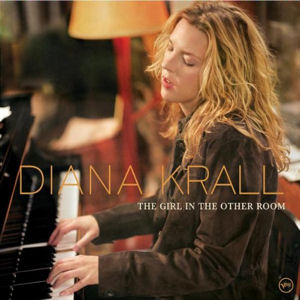
Since I had little experience streaming Bluetooth music, I was intrigued by the concept, so I began by sending music from my collection on the Mufie site via my Samsung Galaxy Tab II. I initially thought that just by turning on Bluetooth in the Setup menu of the receiver and my tablet, I would be able to pair the two, but it wasn’t quite that simple. After a period of trial and error I realized that I had to make the tablet visible over Bluetooth and then I had to scan for it on the Onkyo by hitting the Bluetooth button on the remote. Once I was able to see the tablet, it was a simple matter of pairing them and then I was able to start my Murfie app and send music to the Onkyo.
I started off playing Diana Krall’s Girl in the Other Room title track. There is a small “Music Optimizer” button on the front of the Onkyo which is intended to improve the sound of low resolution music, but, since there is no corresponding button on the remote, I found it difficult to really compare the sound with and without it. At the very least, it didn’t add anything excessive or obvious and it doesn’t affect higher resolution music at all, so I just left it on for the remainder of my listening. I was quite surprised at how natural and clear Krall’s voice sounded and also noted good bass, free of bloat or boom. The cymbals were crisp and without glare and other highs were smooth and absent any harshness.

I moved on to Keith Jarrett’s The Koln Concert and it sounded excellent with full dynamics and good ambience from the hall as well as Jarrett’s piano bench and his thumping on the piano during one passage. My conclusion after all this and more listening is that Bluetooth is NOT an afterthought or “me too” feature on the Onkyo. One thing that I was not able to ascertain, however, was if the Onkyo includes the AptX codec which allows for CD quality music to be streamed via Bluetooth. All I can say for certain is that the Bluetooth feature worked and worked well, subject mostly to the quality of the music source.
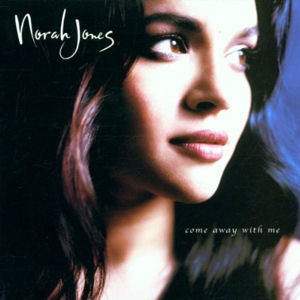
I moved next to a venerable, but still one of my favorite audio formats, the SACD. I should mention that I discovered during my initial setup and testing that the Onkyo won’t play the DSD audio files on an SACD natively, it first converts them to Redbook (44.1 KHz) resolution, probably due to a limitation in the DSP chip. Fortunately, the Oppo is one of the few players that, when it is switched into PCM mode (rather than bitstream) for SACD playback, converts it to 24 bit/88.2 kHz resolution and I noted a definite improvement in the sound quality in this mode with the Onkyo, so all of my SACD listening was done with the Oppo in PCM mode.
First disc up was an audiophile standard, Norah Jones’ Come Away With Me album. Listening to her “Don’t Know Why” track I found her voice to sound very natural and clean, almost crisp at times. Her next track up was the title track, “Come Away With Me”, and I heard very nice brushes on cymbals and good bass output with the lead guitar sounding extra clear and a bit brighter than my reference setup.
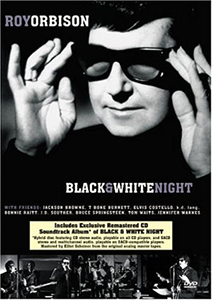
Moving on to one of my all-time favorite surround audio SACD’s, I queued up Roy Orbison’s Black and White Night and started off with “Only the Lonely”. This is one of Orbison’s signature tunes and it sounded glorious as always with strong, impactful bass and good presentation of the backup vocals in the surround channels and a great soundstage. Another of Orbison’s trademark songs is “Crying” and the cymbals were very clear and clean in the opening. Later I noted the violins in the surround channels to be quite beautiful and clear with no hint of the strident sound sometimes present in them in other systems.
I went on to listen to several other notable SACD’s from John Coltrane’s A Love Supreme and Bill Evans’ Explorations and they both sounded great with the same characteristics noted above in terms of clarity, impact, dynamics with bass and cymbals. Coltrane’s sax sounded full and rich and very natural and pretty much mimicked what I have heard on these tracks from my reference system.
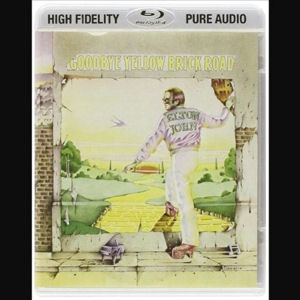
Next up was some Blu-ray Audio in the form of Elton John’s 40th Anniversary re-master of Goodbye Yellow Brick Road. I played the DTS-HD Master Audio version in 24 bit/96 kHz surround mix starting with “Bennie And The Jets”. Right away the drums were hard hitting and John’s vocals were crystal clear especially with his opening “ssss” on “jets”, holding that sound for several seconds. Next I listened to “Sweet Painted Lady” and again heard clear, crisp vocals and full piano notes with shimmering tambourines. The last track I played from this disc was the whimsical “I’ve Seen That Movie Too” and enjoyed the impact of the drums in the front channels along with great guitar work in the right surround channel. I did note in certain loud, complex sections that the Onkyo sounded a bit too bright, almost shrill. I’m not sure if the amp was on the verge of clipping with such high resolution sound going to all channels, but that was the only time I heard this phenomenon throughout my listening and it was fairly brief, so I won’t make too much of it in the overall evaluation of the receiver.
Now a quick word about vinyl playback on the Onkyo through the CD/TV input using an external phono stage. I played quite a few records from Coltrane to Bill Evans to Paul Simon and then the Eagles and finally Foreigner, all on 180 gm. reissues. My conclusion is that if you like the way your phono stage/turntable/phono cartridge sounds, you will find nothing to complain about through the Onkyo. Note that I used Direct mode for vinyl playback so that the analog signal didn’t have to be converted to digital so it could be processed by the DSP for room correction and then converted back to analog for playback.
For the final portion of my review, I decided to move the Onkyo to my main two channel system so I could test its ability to drive lower efficiency (and different) speakers as well as its Wi-Fi function. I hooked up the Onkyo in my home office in place of my reference Parasound Halo 5 preamp and Emotiva XPA-3 (200 wpc) power amp to my GoldenEar Triton 7 speakers and a Definitive Technology Super Cube 2000 sub. I then connected my Oppo 105 via hdmi and then began the Wi-Fi setup. It was a simple matter of finding my home network’s SSID (name) and selecting connection via WPS. I then pressed the WPS button on my router and then clicked the WPS “OK” selection on the Onkyo. After about 30 seconds, the Onkyo was connected to my home network and indicated a 98% signal strength, despite the wall between it and the router. I also re-ran the AccuEQ room calibration setup and was generally pleased with the results, although I changed the crossover to my sub from 40 Hz to 60 Hz to let it handle a bit more of the bass.
I first tried to stream the same DSD tracks via Wi-Fi that had failed to play from my Synology NAS via Ethernet cable to the Onkyo. I got the same message “Cannot Play” as before. Being a determined soul, I copied my DSD files to a USB stick and inserted into the port on the front of the Onkyo. The files showed up on-screen and when I selected Michael Jackson’s “The Girl Is Mine” from the Thriller album it worked! Unfortunately, the Information under the Quick Setup button did not indicate whether the native DSD was being played or being first converted to PCM; all it said was “Network”. I then pushed the “Display” button and cycled through the available information, including Artist, Album, Track, Time, and finally, the bit rate, bit depth, sample frequency and type, which indicated it was indeed playing 1 bit/DSD 2.8 mHz audio! This confirmed what I suspected as the same tracks played earlier via PCM, while sounding quite good at 88.2 kHz from the Oppo, now sounded even better, clearer and more dynamic. So it appears that if you want to play DSD downloads at their native resolution, you will need to load them on a USB drive and connect via the front USB port. I would have preferred that either/both the Ethernet and/or Wi-Fi connections would permit DSD streaming, but it doesn’t seem to work with my Synology NAS, contrary to Onkyo’s web page for the TX-NR535.
I moved next to streaming hi-rez audio tracks in FLAC format from my NAS. I was able to stream all resolutions of these files from Redbook (16 bit/44.1) up to and including 24 bit/192 and they all sounded as good as the recording allowed, although the highest resolution files, 176.4 and 192 kHz sounded clearly better (pun intended!). Some of the classical pieces I played really pushed the Onkyo hard with their wide dynamic range, but I never once sensed any compression or clipping, just beautiful, clear music.
Lastly, I briefly listened to Internet Radio via the free TuneIn streaming service which offers a wide variety of stations to suit just about any musical taste with stations from all around the world. The Onkyo also offers Pandora, Spotify (subscription required), Aupeo and Slacker in addition to TuneIn, but I did not listen to them. Although there were certainly differences in the quality of music streamed from various stations, most are primarily best suited to background listening while working around the house. However, the internet radio functioned well and was always quick to connect to a station after I selected it with the remote. I should mention here that Onkyo offers an excellent app for both Android and i-devices, but I only used it briefly as the receiver’s display is quite legible from across the room and the remote was easy to use and quite responsive. I also used the display on my televisions a good bit, even though they were simple white letters on a black background; not pretty, but they did the job.
Conclusions about the Onkyo TX-NR535 A/V Receiver
Modern receivers have a very tough job as customers demand more and more features every year, but still want them to have a good amplifier and preamp section, along with a good DAC which will deliver great audio quality. Trying to bundle all of the above into a reasonably sized box is hard enough without even considering price. To do this for $499 is one of the toughest jobs in the audio business today. I think Onkyo has done a remarkable job with the new TX-NR535 A/V receiver. They have built upon the excellent audio quality of its predecessors such as the TX-NR509, but have added significant new features such as built in Wi-Fi, Bluetooth and the ability to pass the new Ultra HD 4K/60 video. Thus they are not only offering features that many users will immediately find useful on a daily basis, but also add features for upcoming audio and video formats, so your new receiver doesn’t become obsolete next year.
Audio-wise, I found little to complain about and a lot to like as this receiver never sounded less than good no matter what or how I was playing it. The Onkyo also addressed the issue of buying an inexpensive receiver with, perhaps, a pair of inexpensive bookshelf speakers now, but wanting to upgrade to some larger, more expensive speakers in the future. I paired it with a five channel surround system costing in excess of $5,000 and then a two channel system costing $2,000 and never felt that this receiver was not up to the task of driving all my speakers to more than reasonable levels in my fairly large, open listening room.
I found the new Wi-Fi and Bluetooth functions to work flawlessly and sound excellent in all cases, something I was really not expecting from the Bluetooth streaming. Added to its streaming capabilities, the ability to play lossless formats such as FLAC and WAV at resolutions up to 24 bit/192 kHz was something I found imminently satisfying, as that is what I frequently listen to for my own enjoyment.
The only “negative” I managed to find during my two months with this receiver was its inability to play DSD files natively from SACD’s or streamed from a player such as the Oppo 103D/105.
And it would not play these files at all when streamed from my NAS, although it did an excellent job of playback from a USB drive connected via the front port. I would not even bother to mention these nitpicks in a receiver costing only $499, but this capability is seemingly featured prominently in the “Features” section of their web site describing the NR535. Perhaps this feature will be added in the near future via a firmware update, since I have an early production sample prior to any firmware updates being available.
If I were looking to put together a budget system today, I would put the Onkyo TX-NR535 on my short list and spend any extra money I had on better speakers to compliment this fine AV receiver. It scales up to much more expensive speakers extremely well! I heartily recommend it and definitely enjoyed all the time I spent having it in my systems.


